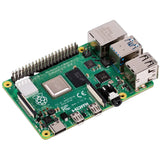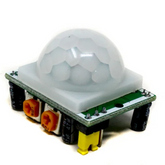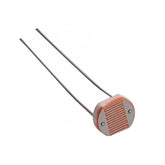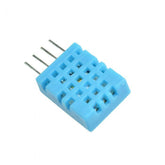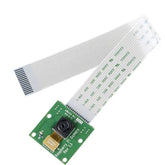Raspberry Pi Project Ideas 2023
Summary
Explore the cutting-edge world of Raspberry Pi with our blog on top project ideas for 2023! Dive into the future with Project 1's Home Automation System, then ensure network security with Project 2: Raspberry Pi Network Monitor. Block unwanted ads across your network with Project 3: Pi-hole Ad Blocker. Transform your space with voice-activated Project 4: Voice Assistant and the sleek Project 5: Smart Mirror. Illuminate your surroundings with Project 6: Gesture-controlled Lights, and set up your personalized web hub with Project 7: Raspberry Pi Web Server. Stay ahead of the weather with Project 8: Weather Station with MQTT, and get creative with Project 9: Streaming Videos Using a Raspberry Pi Camera. Explore automation with Node-RED in Project 10. Elevate your tech game with Raspberry Pi! Read on for detailed guides and take your Raspberry Pi skills to new heights. Don't miss out – the future is now!
Project 1: Home Automation System
Introduction:
Want to make your life easier at Home? After long and a tiring day do you want to control most of the appliances but still be at the comfort of your couch? Here is a Home Automation Project just for you. Home automation refers to the use of technology to control and automate various tasks and devices within a home. With the help of a Raspberry Pi, a versatile and affordable single-board computer, you can create your own home automation system. Raspberry Pi can be the brain of your smart home, allowing you to control lights, appliances, security systems, and more. The Raspberry Pi is a very cheap computer that runs Linux, but it also provides a set of GPIO (general purpose input/output) pins, allowing you to control electronic components for physical computing and explore the Internet of Things (IoT).
Components required : ·


- Temperature and humidity sensor,
- Relay modules for controlling appliances,
- Light sensor

- Mobile App or Web Interface
Application of this project: ·
- Smart Assistants for Daily Tasks: This project will help you to turn the lights, Fan ON/OFF and control many appliances without having to move. ·
- Emergency Assistance: It can be programmed to alert you on medications or even dial an emergency contact to alert them on the emergency situation.
- Memory Aid Systems: Would remember frequently used settings of the appliances thereby making it easier and convenient and everything would be ready to your liking before you even enter your house.
Project 2: Raspberry Pi Network Monitor
Introduction:
Network monitoring is a crucial aspect of managing and maintaining a computer network. It involves observing and analyzing network traffic, performance, and overall health to ensure optimal functionality and identify potential issues. This project will help you gain insights into network traffic, bandwidth usage, and device connectivity. A Raspberry Pi-based network monitor is a practical and cost-effective way to monitor and analyze network traffic. This experiment allows you to gain insights into network activity, identify potential issues, and ensure the optimal performance of your network.
Components required: ·
- Raspberry Pi
- Remote Access Software [ anydesk, VNC]

- Wi-Fi
Application of this project: ·
- Master Control and Internet Usage Tracking: Will give you a master control that you can monitor the data usage and where it’s wastage.
- Quality of Service (QoS) Monitoring: Quality of Service (QoS) in networking refers to the set of technologies and mechanisms that prioritize and manage network traffic to ensure a certain level of performance, reliability, and availability for specific applications or users.
- Customized Alerts and Notifications: Will allow you give the total control of the different notifications so you can provide higher alert notifications for important notification.
Also, read our blog on Top 10 Arduino projects for beginners from simulating traffic lights to monitoring temperature, humidity, and even fluid flow rates, these hands-on experiments offer an exciting start to your journey into electronics.
Project 3: Pi-hole Network- wide Ad Blocker
Introduction:
An unnecessary Ad makes the page load slower as well as drains your network usage but mainly it is very distractive and annoying right? Pi-hole is a powerful network-wide ad blocker that works at the DNS (Domain Name System) level. It helps in blocking ads and tracking domains, providing an efficient way to enhance privacy, reduce data usage, and improves the overall online experience for all devices on a network. In this experiment, we will set up Pi-hole on a Raspberry Pi, turning it into a network-wide ad blocker.

Components required: ·
- Pi-hole Software
- Raspberry Pi
- Router with DHCP Server

Application of this project: ·
- Ad Blocking for All Devices: Internet users mainly use ad blockers to avoid intrusive, interruptive, or repetitive ads and to get faster page speeds, as high Ad loads can affect page loading times
- Improved Privacy: Ad blockers can contribute to improving privacy in several ways like Preventing Malvertising, Blocking Third-Party Cookies, Blocking Tracking Scripts
- Reduced Data Usage: Blocking ads not only speeds up page loading but also reduces the amount of data transferred, which can be especially helpful for users with limited bandwidth or those on mobile data plans.
- Faster Browsing Experience: Ads can significantly slow down the loading time of web pages. Ad blockers remove these ads, resulting in faster page load times and a smoother browsing experience.
Project 4: Voice Assistant
Introduction:
The primary goal of a voice assistant is to enhance user interaction with devices and services by eliminating the need for traditional input methods such as typing or tapping. This project involves in creating a device capable of recognizing and responding to voice commands. Voice assistants serve a wide range of purposes and can be utilized in various contexts to enhance convenience, accessibility, and efficiency.
Components required:
- Raspberry Pi
- Microphone and Speaker
- Assistant Logic
Application of this project: ·
- Home Automation: Serving as a user-friendly interface for controlling various smart devices and systems within a household. This integration enhances the overall convenience, efficiency, and accessibility of home automation
- Information Retrieval: Voice assistants, such as Amazon Alexa, Google Assistant, and Apple's Siri, use variations of these processes to provide a seamless and intuitive interaction experience for users. The goal is to make information retrieval hands-free, efficient, and user-friendly, enabling users to access a wide range of services and information using natural language commands.
- Task Automation: By enabling users to control various devices and access services through spoken commands, voice assistants streamline tasks and enhance the user experience, making it more natural and hands-free.

Project 5: Smart Mirror
Introduction:
The first thing everyone does in the morning is to look in the mirror, imagine this mirror tells you the date, time , todo list. A smart mirror is essentially a two-way mirror with a display behind it that provides information such as time, date, weather, and other customizable data.Smart mirrors showcase the convergence of traditional elements with modern technology, blending practical functionality with a touch of innovation and style. As technology continues to advance, smart mirrors may see further development and integration into various aspects of our daily lives
Components required: ·
- Raspberry Pi
- Two-Way Mirror
- Display
Applications of this project: ·
- Fitness and Wellness: Can be used to display workout routines, health metrics, or motivational messages in a fitness or wellness setting. ·
- Personal Assistant: Offers personal assistant features, such as calendar reminders, news updates, and to-do lists.

Project 6: Gesture-controlled Lights
Introduction:
When your own house welcomes you with a warm welcoming light just by entering, a snap of fingers or a clap, sounds cool right. Illumination in a space is controlled through gestures or movements, typically detected by sensors or cameras. This project offers an innovative and hands-free way to interact with lighting systems. By utilizing gesture recognition technology, users can control the illumination of lights through simple hand movements or gestures. This technology enhances convenience, energy efficiency, and adds a touch of modernity to traditional lighting systems.
Components required: ·
- Gesture Recognition Sensor
- Smart Bulbs
- Power Supply

Applications of this project: ·
- Home Automation: Implementing home automation with gesture-controlled lights involves integrating gesture recognition technology into a smart lighting system. This allows users to control their lights through hand movements or gestures, providing a convenient and interactive experience.
- Accessibility: Incorporating accessibility features in gesture-controlled lights is crucial to ensure that the technology is usable and inclusive for a diverse range of individuals, including those with disabilities.
- Security and Safety: Gesture-controlled lights can be part of a broader home automation system that responds to security events. For instance, sudden motion detected by a sensor could trigger outdoor lights to turn on, potentially deterring intruders.
- Hospitality Industry: It makes it accessible to patients with mobility issues, also hospital is a place with many germs and infection therefore gesture controls eliminate the need for guests to touch physical switches or controls, promoting a touch-free and more hygienic environment.
Project 7: Raspberry Pi Web Server
Introduction:
Let's take a different route now by turning your Raspberry Pi into a web server. This project opens doors to web hosting and web development. A web server is a software application or hardware device that stores, processes, and serves website content to users over the internet. Using the Flask framework, we will create our own webserver to show the sensor data or control the actuator through it.
Components Required: ·
Application of the Project: ·
- Website hosting: Web hosting is a service that allows individuals and organizations to make their websites accessible on the internet, this will help the company or business have its online presence
- Web development: When you create a website, the files and content need to be stored on a server that is connected to the internet. Web hosting providers offer the infrastructure, services, and technologies to host and maintain these websites.
- Personal blog hosting: A personal blog hosting serves as the online platform for individuals to share their thoughts, experiences, and creative content with a global audience. Whether for personal expression, professional development, or community engagement, hosting a personal blog offers numerous benefits.
Project 8: Weather Station with MQTT
Introduction:
In this project we will be learning about the MQTT protocol. We will guide you in creating a weather station that collects valuable climate data and shares it using the MQTT protocol. Environmental data collection and remote monitoring have never been more accessible. A weather station with MQTT provides a scalable and flexible solution for collecting and distributing weather data, making it accessible to a wide range of applications and services in the IoT ecosystem. The MQTT protocol's lightweight nature makes it suitable for resource-constrained environments, and its publish-subscribe model ensures efficient and real-time data communication.
Components Required: ·
- Raspberry Pi
- Weather sensors (e.g., DHT11)
- MQTT broker (can be set up on the Pi)


Application of the Project: ·
- Environmental data collection: This will help in collection of multiple data and provide a common platform for analysing it.
- Remote monitoring: Remote monitoring helps us to monitor the data from anywhere anytime without the need to physically be present near the setup.
- Weather forecasting: Weather forecasting plays a crucial role in various aspects of society, providing valuable information about atmospheric conditions and helping individuals, businesses, and governments make informed decisions.
Project 9: Streaming Videos Using a Raspberry Pi Camera
Introduction:
Become the director of your own live video streaming system with a Raspberry Pi camera. This project gives opportunities for surveillance, live broadcasting, and remote monitoring. It's your chance to explore the exciting world of visual media and surveillance technology.
Components Required: ·

Application of the Project: ·
- Surveillance systems: Surveillance system can be used for Security and Crime Prevention, Public Safety, Traffic Management and many more.
- Live video streaming: Live video streaming has become a versatile and powerful tool with a wide range of applications across various industries. Live Broadcasting, Product Reveals, Virtual Fitness Classes and mental health sessions are few of the uses of live video streaming.
- Remote monitoring: Remote monitoring involves the use of technology to observe and gather data from a distance, enabling real-time tracking, analysis, and management of various systems, processes, and activities. Here are some common uses Patient Monitoring, Equipment Monitoring, Network Monitoring.
Project 10: Node-RED with Raspberry Pi
Introduction:
Ready to simplify your IoT (Internet of Things) development? Node-RED, a visual programming tool, makes it possible. This project will introduce you to the power of Node-RED and its applications in IoT development, home automation, and data visualization.
Components Required: ·
Application of the Project: ·
- IoT development: Node-RED is a visual programming tool that simplifies the development of IoT solutions by providing a flow-based development environment.
- Home automation: Home automation using Node-RED and a Raspberry Pi provides a flexible and user-friendly platform for integrating and controlling smart devices. As you explore more nodes and integrate additional devices, you can create a customized and efficient smart home system tailored to your preferences.
- Data visualization: Data visualization using Node-RED on a Raspberry Pi involves creating visual representations of data collected from various sources and since it requires ver few basic steps making it very user friendly.
Conclusion:
The world of Raspberry Pi projects for 2023 is an exciting playground for tech enthusiasts. From transforming your home into a smart haven with a Home Automation System to keeping a vigilant eye on your network using the Raspberry Pi Network Monitor, and even banishing pesky ads with the Pi-hole Network-wide Ad Blocker—these projects showcase the versatility of this tiny yet powerful device. Whether you're into futuristic tech like a Voice Assistant or the charm of a Smart Mirror, the possibilities are endless. So, dive into the world of innovation, explore the potential of gesture-controlled lights, set up your own Raspberry Pi Web Server, and even create a Weather Station that communicates through MQTT. Unleash your creativity by streaming videos with a Raspberry Pi Camera and delve into the world of automation with Node-RED. The journey with Raspberry Pi is not just about projects; it's a gateway to endless possibilities. Embrace the DIY spirit, let your imagination soar, and turn these ideas into reality! Your Raspberry Pi adventure awaits—click, code, create!
Please do check out other blog posts about Popular electronics
Make sure you check out our wide range of products and collections (we offer some exciting deals!)





